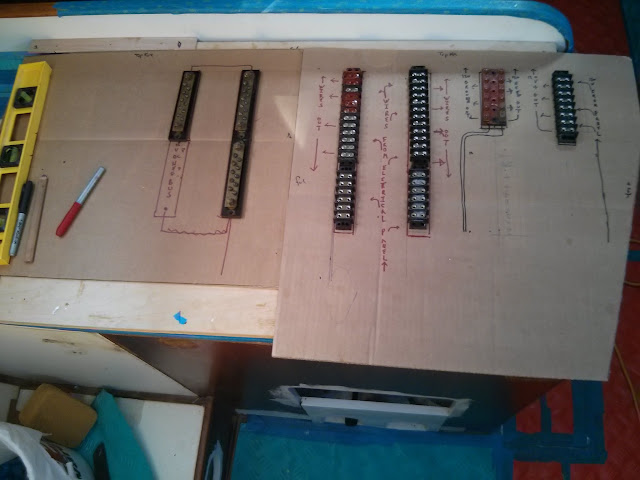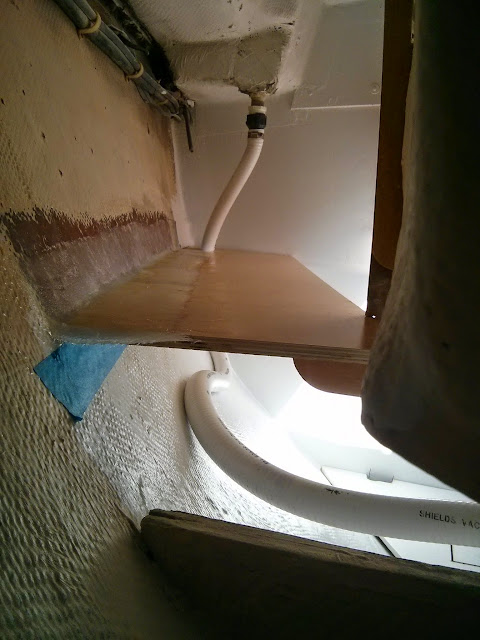We are
replacing the original battery selector switch with a Blue Sea Dual Battery Main
Distribution Panel.
 |
| Photo by Blue Sea Systems. |
The 100A
Rocker Switch Circuit Breaker will feed to the main DC Panel. I added a Blue
Sea 20A Push-To- Reset Circuit Breaker in the empty spot on the panel. Our three electric bilge pumps will be wired
directly to the house bank via this panel. The upper large pump draws 18A an
thus will be wired to the new 20A breaker.
The middle and lower pumps will be wired to the two 15A breakers
included with the panel.
We chose to install the new panel
in the original location - below the Nav Station bench seat. The smaller footprint of the new battery selector switch will allow us to install the bilge pump
switches in the same location.
Of course
the installation began with creating a template with 1/8” luan plywood. Once pleased with the fit and design, I
transferred the dimensions ¼” white starboard.
 |
| Overlaying the luan template atop 1/4" starboard |
In the image
above, I’ve masked the starboard with blue painter’s tape to avoid scuff marks
from the jigsaw.
 |
| Panel face cutouts completed and luan template modified to represent cut out required for new panel installation. |
Once
finished with cutting openings and drilling pilot holes in the new panel, I modified
the luan template to represent the area to be cut out of Pilgrim’s cabinetry.
 |
| Marking the area to be removed for new panel. |
The cutout
for the new panel is larger than the original.
I used a jigsaw to remove the additional material.
 |
| Starter battery will share venue with new panel. |
The down
side of this location is the potential to have people accidentally come in
contact with the switches. To avoid this
pitfall, I added an upper and lower guard to the panel.
 |
| New panel assembled and ready for installation. |
The bilge
pump switches installed in the same order as the pumps (e.g. upper switch =
upper pump). The lower two switches are
reclaimed from other projects and include fuse holders unnecessary for this
installation due to the circuit breakers in the battery distribution panel. When
wiring the lower two bilge pump switches I by-passed the fuse holders.
The actual panel
install went smoothly. Since Pilgrim is
presently without a house battery bank the panel is wired to the starter
battery as bank one. This temporary set
up provides power for the lower bilge pump.
 |
| New panel installation complete. |
The new
panel highlights the need to address water damage along the cabin sole… everything
in due time.





























